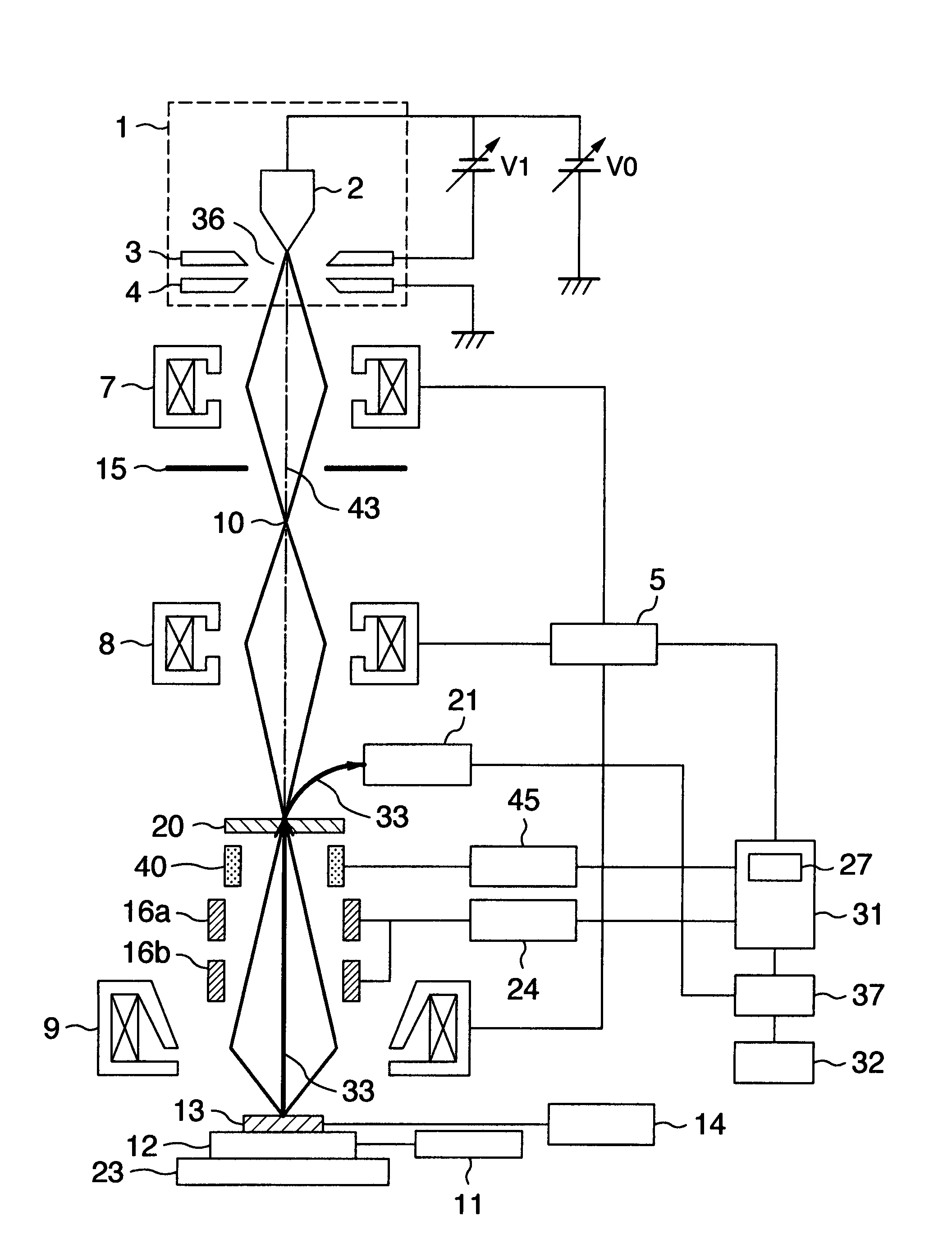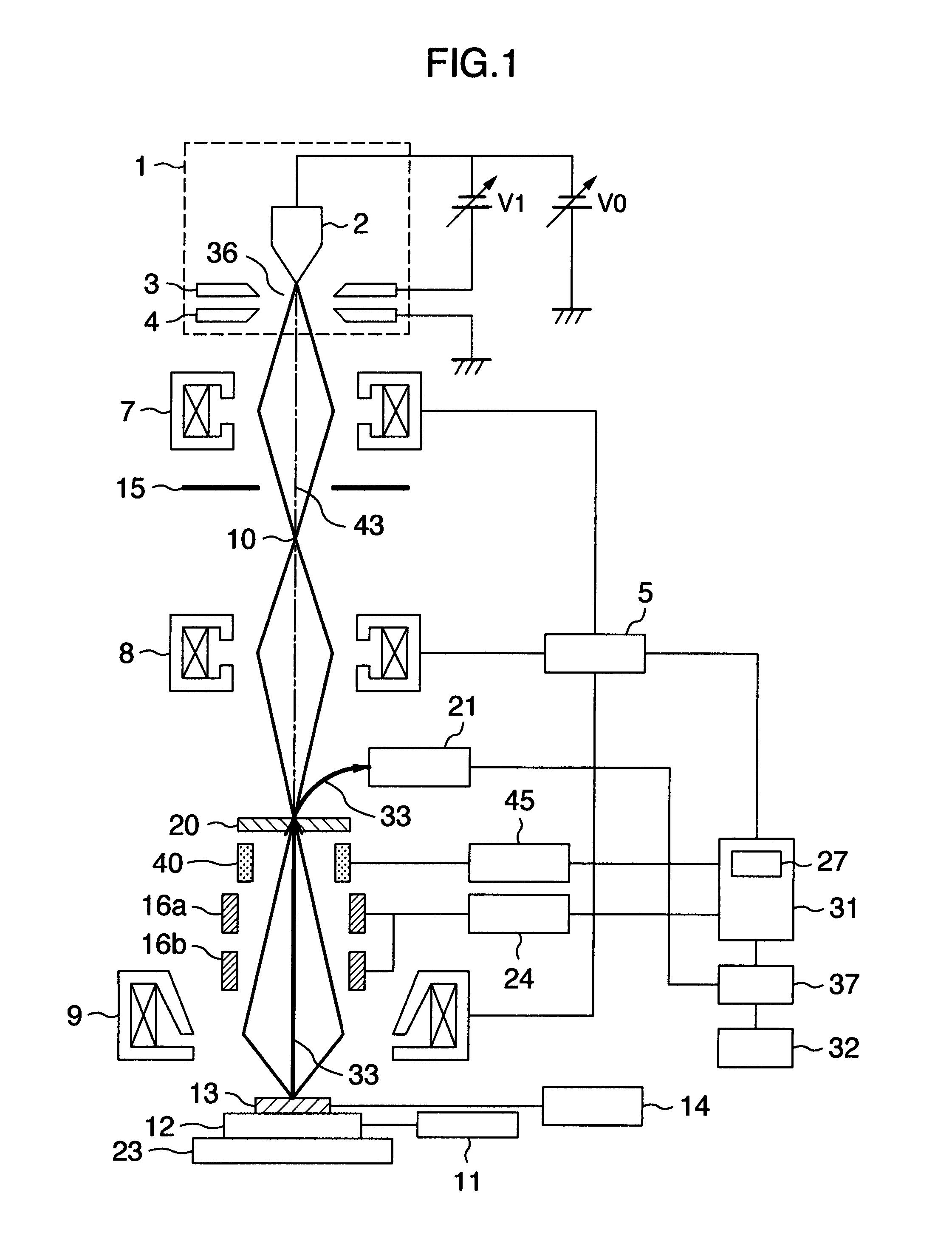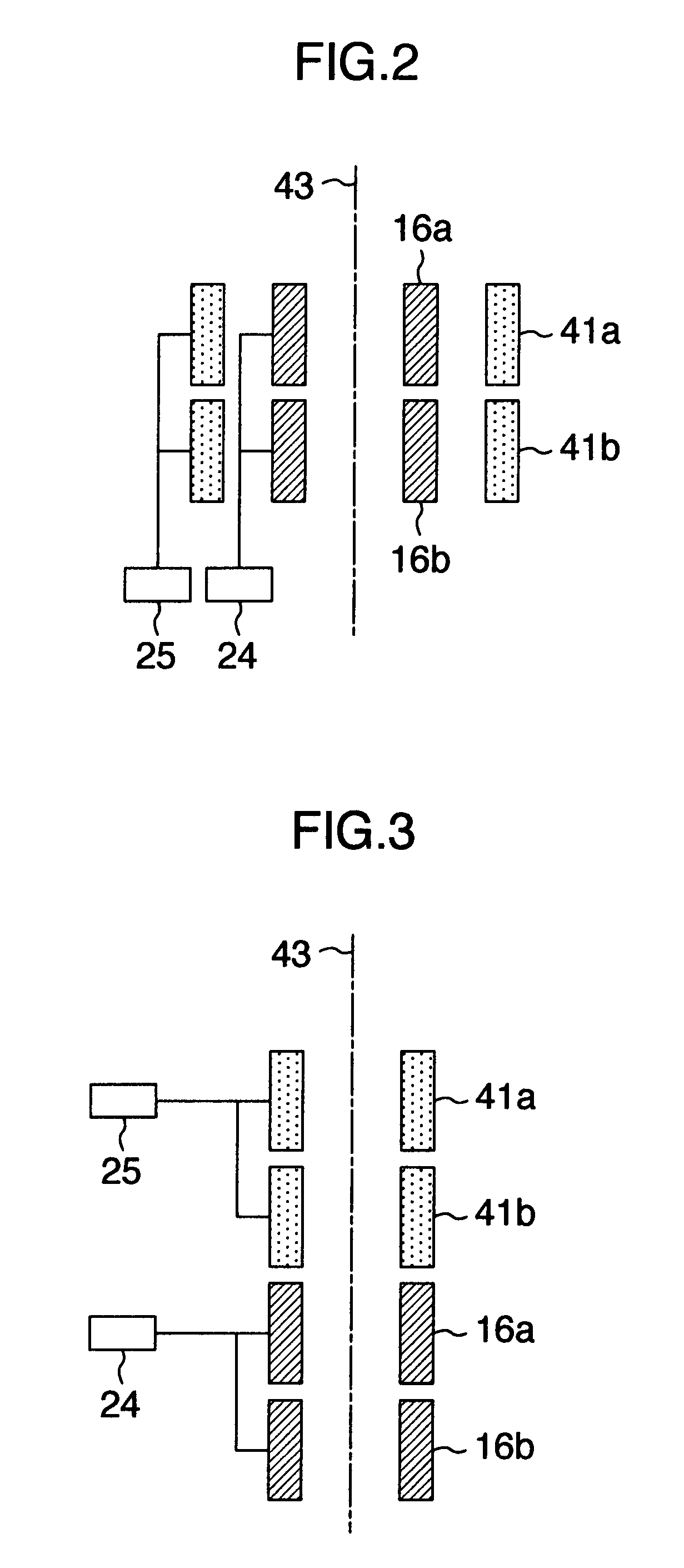Charged particle beam scanning method and charged particle beam apparatus
a charge beam and beam technology, applied in the direction of beam deviation/focusing by electric/magnetic means, instruments, mass spectrometers, etc., can solve the problem that the scan position cannot sometimes be moved to a desired location, the degree of image shift error differs point by point, and the scanning position cannot be moved
- Summary
- Abstract
- Description
- Claims
- Application Information
AI Technical Summary
Benefits of technology
Problems solved by technology
Method used
Image
Examples
embodiment 2
[0062]By setting the measuring range of error amount to a range wider than that of movement amounts of charged particle beam allowed for the apparatus, correction can be made highly accurately although depending on a correction calculation method. For example, when a range wider than the X movement amount range and Y movement amount range on the apparatus is taken as shown at region 47 in FIG. 11, the accuracy of calculation of correction for error amount can be ameliorated. For example, a method for correction calculation is employed according to which four location points are extracted out of points indicated in FIG. 10 to prepare a quadrilateral and an equation representative of the quadrilateral is used to calculate an error amount at a position inside it. If, in this case, correction is desired to be made at all areas as shown in FIG. 11, information regarding a region outside the movement range is needed. And in this case an error amount is calculated on the basis of address i...
embodiment 3
[0077]A semiconductor wafer as representing the specimen 13 is not always flush, having different heights. Therefore, the movement amount of scan position of electron beam 36 needs to be controlled cooperatively with the height. For example, when the deflector 41 is used for control of the scan position, the movement amount will change with different specimen heights even if the same current or voltage is applied to the deflector 41.
[0078]Further, if the distance over which movement is made is large in moving the scan position of electron beam 36, an aberration due to curvature of field results in an astigmatism and the like and a change develops. This impairs clarity of image, that is, an image blurs, degrading the accuracy of measurement of the centroid of the target object. Then, depending on the movement distance of electron beam 36, an aberration such as aberration due to curvature of field or astigmatism responsible for image blur needs to be adjusted.
[0079]If, in the course o...
embodiment 4
[0088]Recently, of semiconductor wafers, a wafer of the type in which electrification is accumulated in a stationary fashion on the overall wafer surface can be seen here and there. The electrification is known as being difficult to be removed by grounding. Causes of this stationary electrification is accounted for by the fact that, for example, a polar substance inside resist is polarized by friction during resist coating by means of a spin coater and stationary potential results or that the electrification is based on an etching process using plasma.
[0089]The electrification accumulated in a stationary fashion over a wide wafer area (sometimes termed global electrification hereinafter) tends to exhibit potential which is the highest in the center of the wafer and decreases toward the edge of the wafer. Potential remaining on the specimen surface forms a lens based on the principle of formation of electrostatic lens. Since the potential of the global electrification differs for the...
PUM
 Login to View More
Login to View More Abstract
Description
Claims
Application Information
 Login to View More
Login to View More - R&D
- Intellectual Property
- Life Sciences
- Materials
- Tech Scout
- Unparalleled Data Quality
- Higher Quality Content
- 60% Fewer Hallucinations
Browse by: Latest US Patents, China's latest patents, Technical Efficacy Thesaurus, Application Domain, Technology Topic, Popular Technical Reports.
© 2025 PatSnap. All rights reserved.Legal|Privacy policy|Modern Slavery Act Transparency Statement|Sitemap|About US| Contact US: help@patsnap.com



